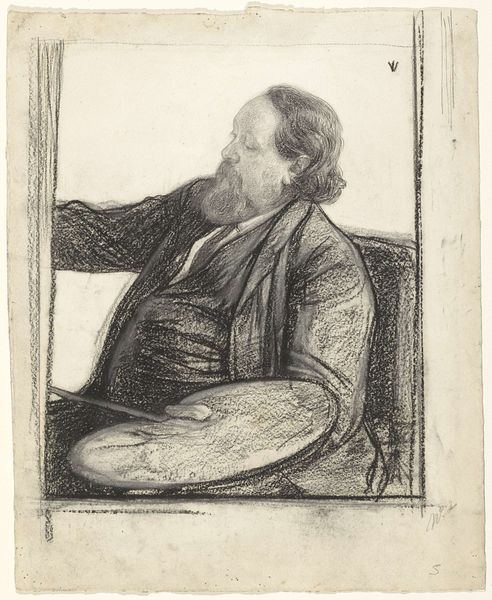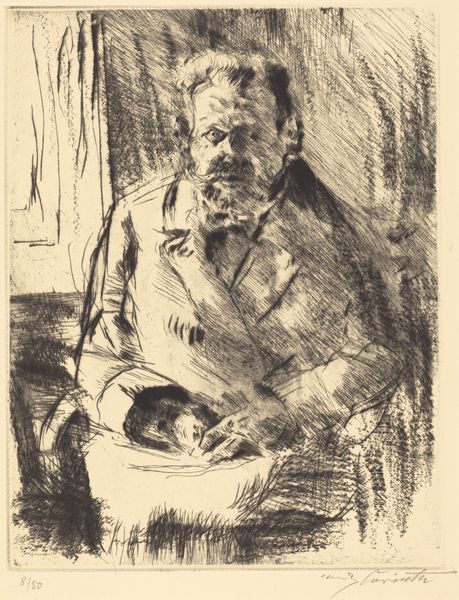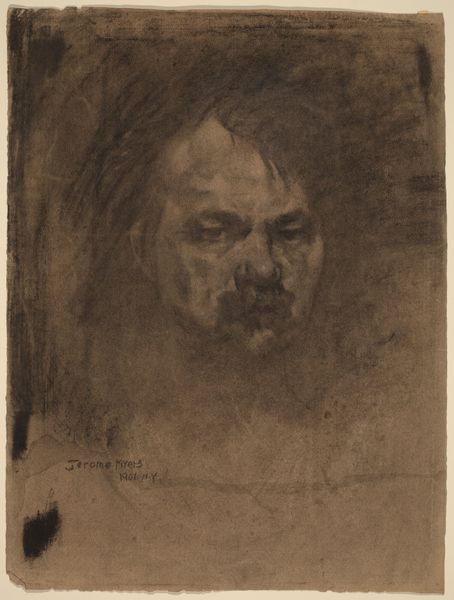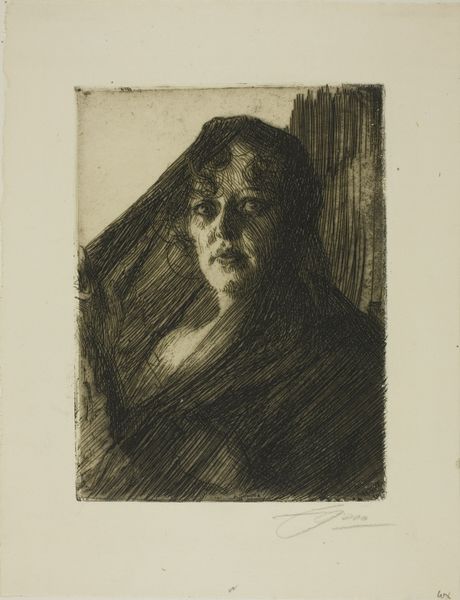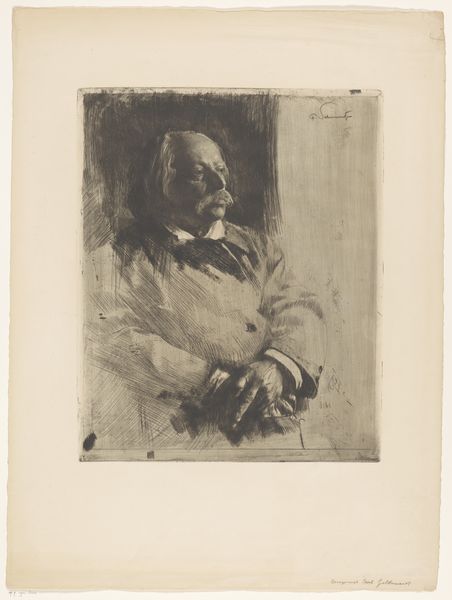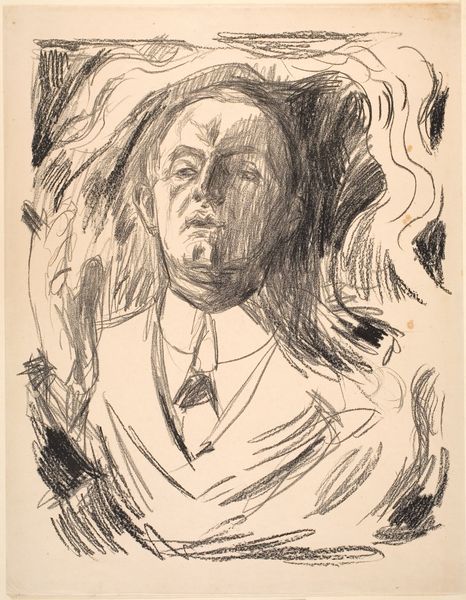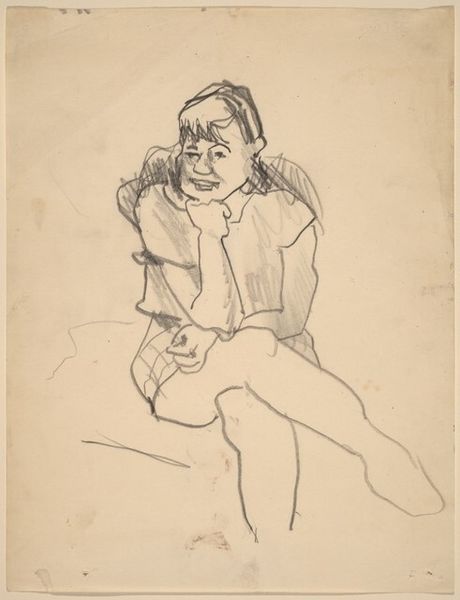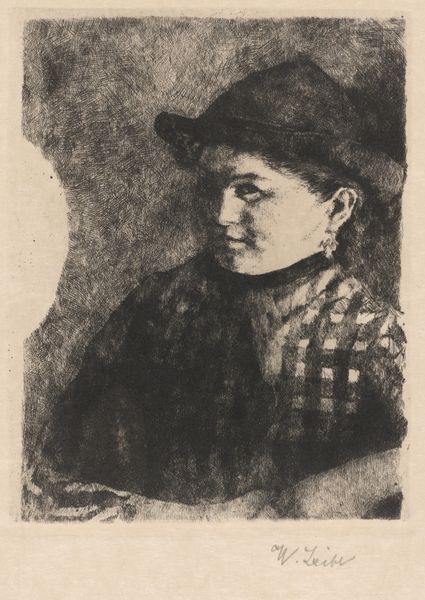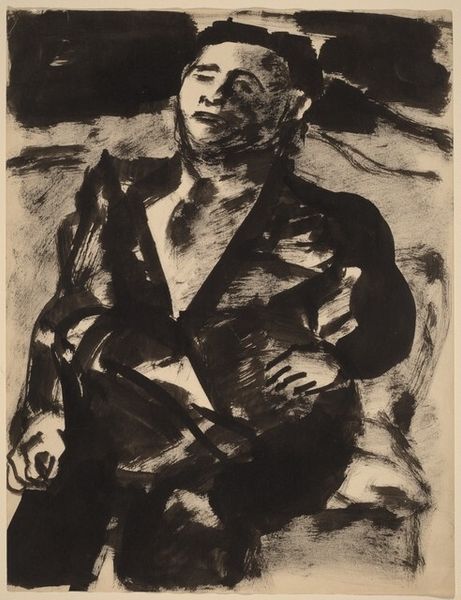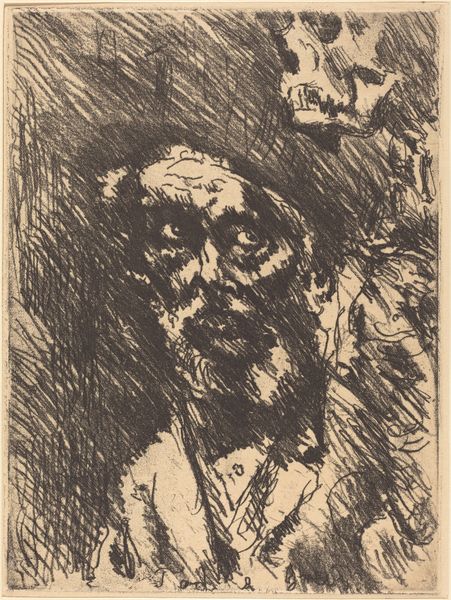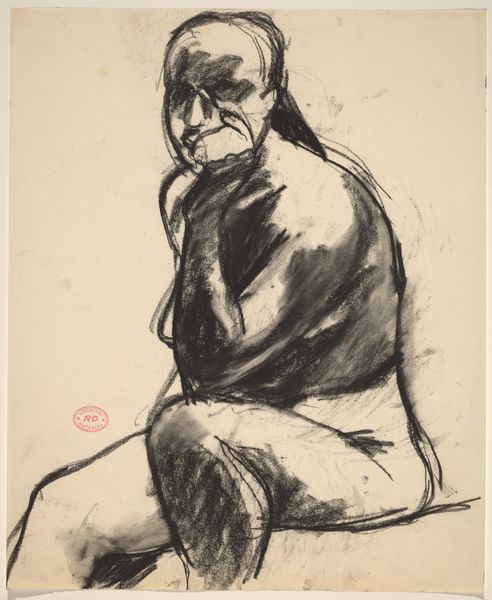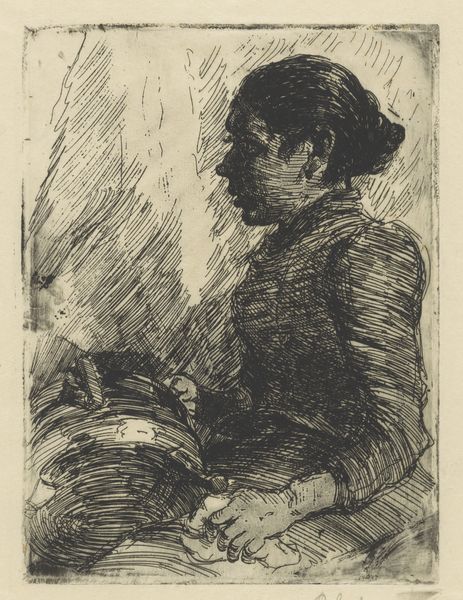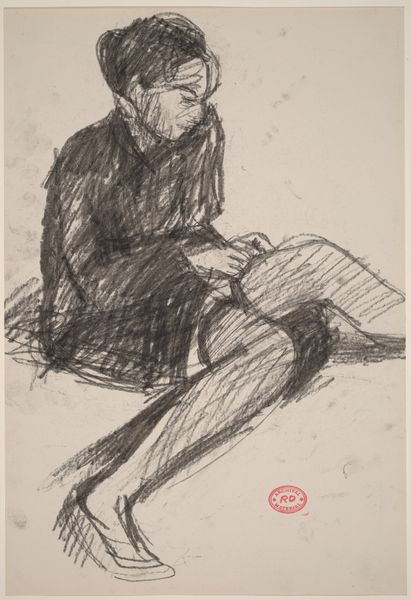
print, etching
#
portrait
# print
#
etching
#
post-impressionism
Copyright: National Gallery of Art: CC0 1.0
Curator: Here we have Camille Pissarro's etching, circa 1890, titled "Paul Signac (Portrait de Paul Signac)." Editor: My first impression is of a quiet contemplation. The figure seems enshrouded in thought, emphasized by the smoky, almost dissolving lines of the etching. There's a melancholic air. Curator: I find that intriguing given what we know of Pissarro's relationship to Signac within the larger Neo-Impressionist circle. Here, the focus is on the material act itself; notice how the medium of etching with its labor-intensive nature seems almost at odds with the seemingly radical subject. Etching allowed for multiples, effectively democratizing this image. Editor: True, but let's also consider Signac himself, here visualized by Pissarro, rendered holding his ever present smoking pipe. That symbol carries potent cultural weight; a signifier of leisure, artistic contemplation, but also something shared within the bohemian circles both painters inhabited. His sidelong glance seems less like simple melancholy and more suggestive of artistic genius. Curator: I'd suggest the 'artistic genius' attribution is itself historically contingent! Think of this print as a commodity circulating within a very specific economic and social network; Pissarro making and offering likenesses, expanding Signac's reputation alongside his own within particular markets and art production systems. Editor: Yet consider the very deliberate darkness that surrounds Signac. He isn’t sharply delineated but emerging from a hazy depth; in my view, it suggests not simply commodity exchange but the mysterious essence of a fellow painter; think of how the shadows almost swallow him whole. I cannot help to feel the respect that Pissarro surely had toward the other Post-Impressionists. Curator: Perhaps both forces are in play; commodification and reverie. To analyze an artwork just to highlight a psychological aspect of it undermines its full essence and production. Editor: But perhaps focusing exclusively on materials blinds us to the symbols encoded, that truly give shape and texture to art, in a unique historical memory that echoes through time? Curator: A tension we clearly still grapple with today. Editor: Indeed; these layers add rich depth.
Comments
No comments
Be the first to comment and join the conversation on the ultimate creative platform.
